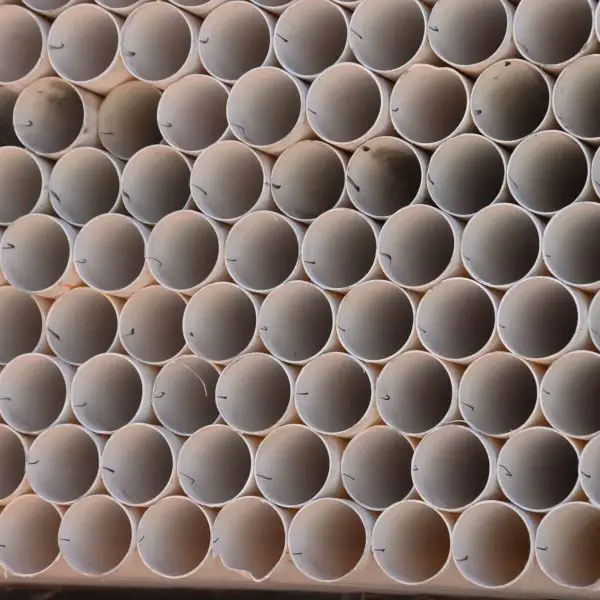Super glue is probably the most popular adhesive today for its versatility and fast-drying properties.
These convenient adhesives usually cost only a few bucks and provide long-lasting rock-solid bonds. Since they are so popular, there are a lot of models and types of super glues. One of those types is liquid, and the other is gel super glue.
You might have stumbled upon these two types of super glue, and they’ve left you wondering which one is better.
In this article, we will compare the liquid vs gel super glue to see the pros and the cons of both types of glue. We will look at the properties and the advantages of these super glues so that you can decide which one is better for you.
Gel vs Liquid Super Glue – Pros & Cons
Here is a quick overview of the strengths and weaknesses of both types of super glue.
Super Glue Gel
Gel Strengths:
- Easier To Apply
- Doesn’t Make A Mess
- Less Wasteful Than Liquid Super Glue
- Great For Vertical Surfaces
Gel Weaknesses:
- Dries Longer
- Sometimes Weaker Than Liquid Super Glue
VS
Super Glue Liquid
Gel Strengths:
- Cheaper
- Great For Filling Horizontal Cracks
- Dries Fast
- Sometimes Stronger Than Gel Super Glue
Gel Weaknesses:
- Wasteful
- Bad For Vertical Surfaces
- Runny & Makes A Mess
Super Glue Gel
We will now go through super glue gel properties a bit more in detail.
Advantages
Super glue gels are different from liquid versions because of their high viscosity. What is viscosity, you might ask?
Viscosity is a measure of the liquid’s resistance to flow. The higher the viscosity, the higher the resistance. That means that gel super glue stays in place and has a syrup or gelatine-like consistency.
The main advantage and the reason why this type of super glue version was invented is the easy and mess-free application. It’s much easier to control a viscous gel version of the super glue than the liquid one.
The super glue gel stays where you want it to stay and doesn’t make a mess. Because of that, it is the preferred adhesive for vertical surfaces where a regular liquid super glue would spill.
The added viscosity is also great for less wasteful and more controlled application. One problem that liquid super glues always have is the constant flow from the bottle, even after you stop applying it. This leads to mess, and more importantly, wasted glue.
High viscosity gel super glue stays in the bottle when not in use and doesn’t tend to harden in it. So while this adhesive is more expensive, its consistency saves you money since you waste and use less of the glue.
This type of glue is used by modelers a lot. It’s precise, goes where you want it to go, and is very well suited for small part bonding where you need to apply just a tiny amount of glue. If you’re a modeler, jeweler, or have a lot of crafting projects, this type of super glue is ideal for you.
This glue is perfect for any projects where small parts are bonded and where precision is of the essence.
Drawbacks
The first drawback of this glue, which might not be a disadvantage for some, is the slower drying time. Gel super glue takes about a minute to set while some liquid models can take only 10 to 15 seconds to do so. If you need the fastest setting glue, liquid super glue is a better choice.
Another drawback of this type of super glue is the lower strength of the bond. This doesn’t happen with all models, but cheaper ones tend to have weaker bonds than most liquid super glues.
The best gel super glues are as strong as liquid super glue models and don’t have this disadvantage. Models from Loctite, Gorilla, GlueMasters, and Bob Smith Industries are known to be as strong and sometimes even stronger than cheaper liquid versions of super glue.
Recommended Model
The Insta-Cure Gap Filling Bob Smith Industries super glue is the king of gel super glues. It combines a high viscosity with fast drying time, eliminating all the usual drawbacks of regular gel super glues.
Last update on 2025-02-02 / Affiliate links / Images from Amazon Product Advertising API
Its bonding power is almost two times higher than the usual super glue gel’s structural strength. It’s been referred to many times as super glue on steroids.
It dries in only 5 to 15 seconds, beating even most of the liquid super glue models on the market!
This is the glue modelers use for their projects that require massive strength and accuracy.
Super Glue Liquid

Now that we know a bit more about super glue gel, let’s go through the pros and cons of the liquid super glue in more detail.
Advantages
Liquid super glue is the most common one and a much more produced version of super glue. You can find this type of glue in almost every store, which makes its availability great.
Since it’s so popular and so many models are available, the price will be lower. This is, in our opinion, the biggest advantage of liquid super glue. You can walk into a local supermarket and get it for a buck, sometimes even less!
The properties of the liquid super glue are generally similar to the gel version, with the major difference being viscosity. The liquid super glue has a low viscosity, which means it doesn’t resist flowing.
This type of consistency is great for filling horizontal surface cracks and fractures where the adhesive can flow into the cracks.
The super glue liquid also dries faster than super glue gel, making it an excellent choice when you need a fast drying time to finish the job in no time.
The best liquid super glue adhesives take only 5 to 10 seconds to set, which makes them the fastest setting adhesive commercially available. This also a great property when you need to apply larger quantities of glue on bigger surfaces and need the fastest drying time possible.
Drawbacks
The biggest drawback of the liquid super glue is its viscosity. It’s very runny and tends to make a mess when applied to small parts when it spills. It has a water-like consistency and performs awful on vertical surfaces because of that.
If you need precision and mess-free application, a super glue gel is an answer.
Another disadvantage of the liquid super glue is that it’s wasteful. While it is cheaper than the gel version, it ends up wasting as much as 2 to 3 times of the glue more.
The cheaper models keep spilling the glue even when you stop the application, and the cheaper versions tend to dry up in the bottle after some time.
The liquid super glue models from Gorilla and Loctite tend to be much better in terms of wastage. Their glue doesn’t run from the bottle that much and doesn’t dry when there is glue left in the bottle.
Last update on 2025-02-02 / Affiliate links / Images from Amazon Product Advertising API
Liquid super glue is for those that use super glue sporadically and for a common application like household repairs. High viscosity super glue gel won’t benefit you if you don’t have a project that requires precision. Liquid super glue is cheaper and will do the job as good in most situations.
Recommended Model
- For Hard To Reach Places: Features extra-long pinpoint nozzle for precise application on surfaces that are difficult to reach
Last update on 2025-02-03 / Affiliate links / Images from Amazon Product Advertising API
The Loctite super glue is our recommended model for liquid super glues. It has tens of thousands of purchases on Amazon and Home Depot and is readily available in most supermarkets.
It’s super affordable and offers excellent bonding strength and lighting fast drying time. You can get this adhesive for 3 times less money than most super glue gel adhesives.
For most people, this super glue will do the job, and for the price, it’s really unbeatable!
Conclusion
That ends our contest between super glue gel vs liquid.
There isn’t a clear winner, and since everyone is different, you can’t really say one is better than another.
In the end, try both versions, and see what works best for you.











